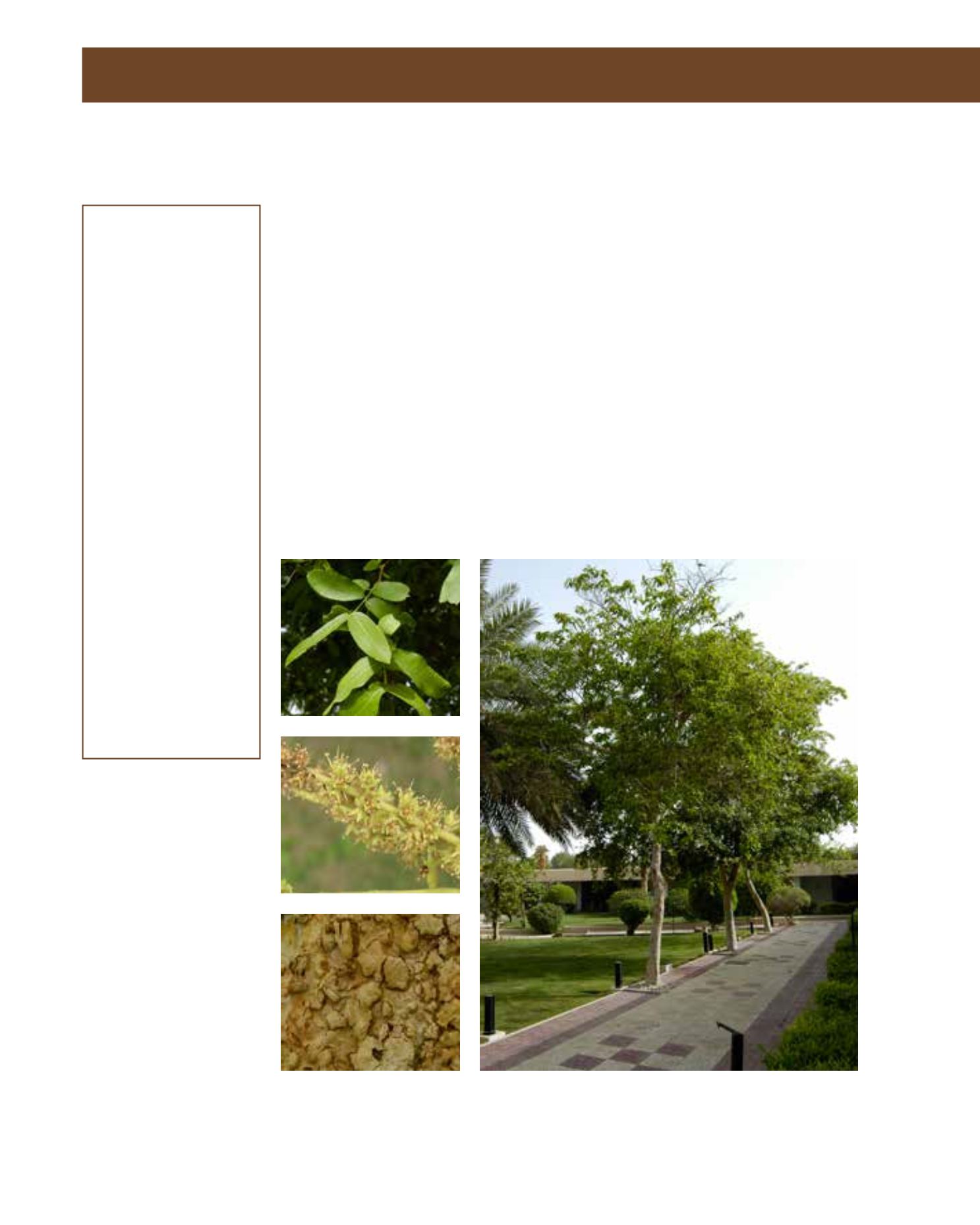

GENERAL
Origin
:
sub-tropical
Vigour
:
normal growth
rate
Humidity
:
semi-arid, semi-
humid, very
humid
Propagation :
sowing and
pricking out,
cuttings
Maintenance :
low
CONDITIONS
Urban climate :
resistant
Dessication :
resistant
Stagnant water :
vulnerable
Irrigation
:
high
Salinity/ppm :
high (5000 ppm)
Hardiness
:
-6°C
SHAPE
Type
:
tree
Height
:
25 m
Spread
:
20 m
Foliage
:
deciduous
FLOWER
Colour
:
white, light green
Size
:
2 cm
Period
:
May - May
Smell
:
pleasantly
scented, flower
FRUIT
Type of fruit :
silique
Fruit size
:
3 cm
The Arjuna Tree, native to India, is a tall, deciduous, tree up to 25 m high, often with a buttressed
trunk, the bark of which is grey or pinkish-green, smooth and peels off in thin strips. Found
growing in several locations in Arriyadh (e.g. behind the Hotels Intercontinental and Khozama),
it is not readily identifiable for most people. It is also very similar to T. elliptica. Arjuna has a
wide crown with drooping branches. Its leaves are hard, simple, opposite, and elliptical, up to 9
cm long, often with crenulated edges: trees are sometimes leafless before late-spring flowering and
new leaves appear in late winter. The small, cup-shaped, creamy or greenish-white and strongly
fragrant flowers are borne on small terminal spikes up to 13 cm long. The dark brown, oblong,
woody fruits with stiff, narrow, striated wings take nearly a year to ripen. Initially a slow-growing
tree, the Arjuna has a shallow root system. In its native habitat, T. arjuna grows on most soils in
ravines or in dry watercourses, becoming very tall on fertile alluvial loam. Tolerant to salinity
and drought, regular irrigation is, however, required in Arriyadh. It will withstand cold winters,
but is sensitive to hard frosts. Propagation is by seed, root suckers, and air-layering. T. arjuna
is suitable for planting on saline, alkaline soils and deep ravines, and is a useful park tree and
background tree in a large garden. Apart from tidying leaf litter and occasional deep watering to
improve appearance, little maintenance is necessary.
297
Terminalia arjuna,
Combretaceae
Arjuna Tree
















